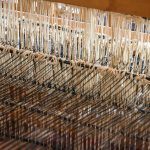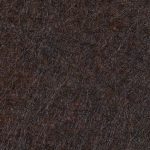When choosing the best pillowcase fabric, consider your comfort and skin or hair needs. Cotton offers breathability and durability, keeping you cool and comfy. Satin or silk protect hair from breakage and lock in skin moisture. Linen keeps you fresh and hypoallergenic, while bamboo feels soft and eco-friendly. Microfiber is budget-friendly but less breathable. Your perfect pillowcase balances these benefits, and below, you’ll find how to pick the ideal one for you.
Table of Contents
Key Takeaways
- Cotton pillowcases offer breathability, softness, moisture absorption, and durability, ideal for sensitive skin and year-round comfort.
- Satin or silk pillowcases reduce hair breakage, maintain skin hydration, and minimize friction for smoother skin and hair.
- Linen pillowcases provide durable, breathable, hypoallergenic comfort that softens with use and keeps you cool.
- Bamboo pillowcases are eco-friendly, naturally hypoallergenic, moisture-wicking, and promote skin hydration for refreshed mornings.
- Microfiber pillowcases are affordable, quick-drying, and stain-resistant but may trap heat and lack natural fiber comfort.
Benefits of Cotton Pillowcases
Cotton pillowcases offer a range of benefits that make them a popular choice for many people. You’ll appreciate their breathability, which helps regulate your temperature, keeping you cool in summer and warm in winter.
Cotton is soft and comfortable against your skin, reducing irritation and making it ideal if you have allergies or sensitive skin. It also absorbs moisture well, so it helps keep sweat off your face during sleep.
You’ll find cotton pillowcases durable and easy to care for; they withstand regular washing without losing their shape or softness. Plus, they’re widely available in various thread counts and weaves, so you can choose the quality and feel that suit you best.
Why Choose Satin or Silk Pillowcases
You’ll love how satin or silk pillowcases help reduce hair breakage and frizz while keeping your skin hydrated overnight.
These fabrics feel incredibly smooth and luxurious against your skin, making bedtime more enjoyable.
Choosing satin or silk means treating yourself to both beauty benefits and a touch of elegance.
Hair Benefits
Although many people overlook the impact of pillowcase material on hair health, choosing satin or silk can make a noticeable difference.
These fabrics reduce friction, preventing hair breakage and split ends while you sleep. When you switch, you’ll notice:
- Less frizz and tangles in the morning.
- Reduced hair breakage from rubbing against rougher fabrics.
- Longer-lasting hairstyles because satin and silk don’t absorb moisture.
- Enhanced scalp comfort due to the smooth, breathable texture.
Skin Hydration
Because satin and silk pillowcases create less friction and don’t absorb moisture like other fabrics, they help keep your skin hydrated throughout the night.
When you sleep on cotton or linen, these materials can draw moisture away from your skin, leaving it dry and more prone to irritation.
Satin and silk, however, maintain your skin’s natural oils and hydration levels, preventing dryness and flakiness.
This benefit is especially important if you have sensitive or dry skin, as it supports your skin’s natural barrier and reduces the chances of waking up with redness or tightness.
Luxury Feel
Anyone who’s tried satin or silk pillowcases knows they offer a distinct luxury feel you won’t get from cotton or linen.
When you slip your head onto these smooth surfaces, you immediately notice:
- The cool, sleek texture that glides effortlessly against your skin.
- The gentle embrace that reduces friction, preventing hair breakage and skin creases.
- The subtle sheen that adds an elegant touch to your bedding.
- The lightweight softness that feels like a spa experience every night.
Choosing satin or silk means indulging in comfort and sophistication.
You not only enhance your sleep quality but also pamper your skin and hair with every use.
It’s a luxury that transforms your nightly routine into a soothing, elegant ritual.
The Advantages of Linen Pillowcases
When you choose linen pillowcases, you’ll enjoy a unique blend of durability and breathability that few other fabrics can match. Linen naturally regulates temperature, keeping you cool in summer and cozy in winter. It’s also hypoallergenic, making it great if you have sensitive skin. Plus, its texture softens with every wash, enhancing comfort over time.
| Benefit | How It Feels to You |
|---|---|
| Breathability | Fresh, cool nights without sweat |
| Durability | Reliable, long-lasting comfort |
| Hypoallergenic | Gentle touch, irritation-free |
| Softening Texture | Cozy, inviting softness evolves |
Linen pillowcases offer practical luxury that improves your sleep experience night after night.
Exploring Bamboo Pillowcase Fabrics
You’ll love how bamboo pillowcases feel soft, breathable, and naturally hypoallergenic, making them great for sensitive skin.
Plus, they’re eco-friendly and moisture-wicking, keeping you cool all night.
Just remember to wash them gently and avoid high heat to keep their quality intact.
Bamboo Fabric Benefits
Although bamboo fabric might seem like a recent innovation, it has quickly gained popularity for pillowcases due to its unique benefits.
When you choose bamboo pillowcases, you’ll notice these advantages:
- Softness – Bamboo fabric feels luxuriously smooth, reducing friction on your skin and hair.
- Breathability – It wicks moisture away, keeping you cool and comfortable all night.
- Hypoallergenic – Bamboo resists allergens and bacteria, making it great for sensitive skin.
- Eco-Friendly – Bamboo grows rapidly with minimal water, so it’s a sustainable choice.
These qualities make bamboo pillowcases ideal if you want a blend of comfort, health benefits, and environmental responsibility.
You’ll wake up feeling refreshed, with less irritation and better skin hydration thanks to bamboo’s natural properties.
Care Tips for Bamboo
Because bamboo fabric is delicate yet durable, caring for your bamboo pillowcases properly guarantees they maintain their softness and longevity. You should always wash them in cold water with a gentle cycle to prevent damage. Avoid bleach and fabric softeners, which can break down the fibers. Line drying or tumble drying on low heat preserves their texture. Iron on a low setting if needed, but usually, bamboo pillowcases resist wrinkles well.
| Care Tip | Recommendation |
|---|---|
| Washing Temperature | Cold water |
| Washing Cycle | Gentle |
| Detergents | Mild, no bleach or softeners |
| Drying Method | Line dry or tumble low heat |
| Ironing | Low heat if necessary |
Follow these tips and your bamboo pillowcases will feel luxurious night after night.
Microfiber Pillowcases: Pros and Cons
When choosing pillowcases, microfiber offers a unique blend of affordability and durability that might catch your attention. This synthetic fabric feels smooth and is resistant to wrinkles, making it a practical option. However, it’s important to weigh its pros and cons before deciding.
- Microfiber is budget-friendly, letting you buy quality cases without overspending.
- It dries quickly, which helps if you wash pillowcases often.
- The fabric resists stains and fading, keeping cases looking fresh longer.
- On the downside, microfiber can trap heat and mightn’t breathe as well as natural fibers, impacting comfort.
Considering these points can help you decide if microfiber suits your sleep needs.
Factors to Consider When Selecting Pillowcase Fabric
Choosing the right fabric for your pillowcases can markedly affect your comfort and the longevity of your bedding.
First, consider breathability—natural fibers like cotton and linen allow airflow, keeping you cool through the night.
Next, think about softness; fabrics such as silk and satin offer a smooth feel that’s gentle on your skin and hair.
Durability matters too; you want a material that withstands frequent washing without losing shape or color.
Allergies are another factor—hypoallergenic fabrics can reduce irritation.
Finally, maintenance is key: some fabrics require delicate care, while others are machine-wash friendly.
Frequently Asked Questions
How Often Should Pillowcases Be Washed for Hygiene?
You should wash your pillowcases at least once a week to keep them fresh and hygienic. If you sweat a lot or have allergies, consider washing them more often to prevent bacteria and allergens buildup.
Can Pillowcase Fabric Affect Skin Allergies?
Like choosing the right armor, you need pillowcase fabric that shields your skin. Hypoallergenic materials like silk or cotton can reduce irritation and allergies, helping you avoid the discomfort of itchy, inflamed skin overnight.
Are Organic Pillowcases Better for Sensitive Skin?
You’ll find organic pillowcases better for sensitive skin because they’re free from harsh chemicals and pesticides. They’re gentler, reducing irritation and allergies, so your skin feels calmer and healthier throughout the night.
How Does Pillowcase Thread Count Impact Comfort?
Imagine counting threads like counting sheep—more isn’t always better. You’ll find higher thread counts feel smoother, but too high can trap heat. So, pick a comfy balance that lets your skin breathe at night!
Do Pillowcase Fabrics Influence Hair Health?
Yes, pillowcase fabrics influence hair health. You’ll want smooth, breathable materials like silk or satin to reduce friction, preventing breakage and frizz. Avoid rough fabrics like cotton that can cause hair damage and dryness overnight.
- The Geode Tie-Dye Technique: Creating Crystal Patterns - July 13, 2025
- How to Avoid Muddy Colors in Your Tie-Dye - July 13, 2025
- Reviving Old Clothes With Tie-Dye Techniques - July 13, 2025







